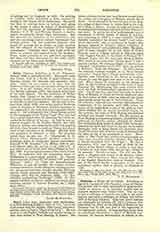

Carystus, a titular see of Greece. According to legend it was named after Carystus, a son of Chiron. The ancient city is often mentioned by geographers, chiefly on account of its beautiful marble and its amianth obtained from Mount Oche. The see was at first a suffragan of Corinth, but early in the ninth century was made a suffragan of Athens and before 1579 of Euripos (Chalcis). Only two Greek bishops are mentioned by Lequien (II, 197): Cyriacus, who subscribed the letter of the bishops of Hellas to the Emperor Leo in 458, and Joel at the beginning of the eighteenth century At least another titular may be mentioned, Demetrius, a friend of Michael Acominatos, the famous Metropolitan of Athens in the thirteenth century. The bishopric was maintained in 1833, but under the district name of Carystia, its titular residing at Kyme. In 1900 it was united to Chalcis (Euripos), the capital of the island. As to the Latin see, we read that Innocent III assigned it with other suffragans to the Archbishopric of Athens. In the “Gerarchia Cattolica” (1907, 244) it is as-signed to its original metropolis, Corinth. No residential bishop is known. Lequien (III, 857) mentions an obviously titular bishop of 1718. Carystus is today a village of about 2000 inhabitants on the southern coast of Eubcea.
S. PETRIDES

